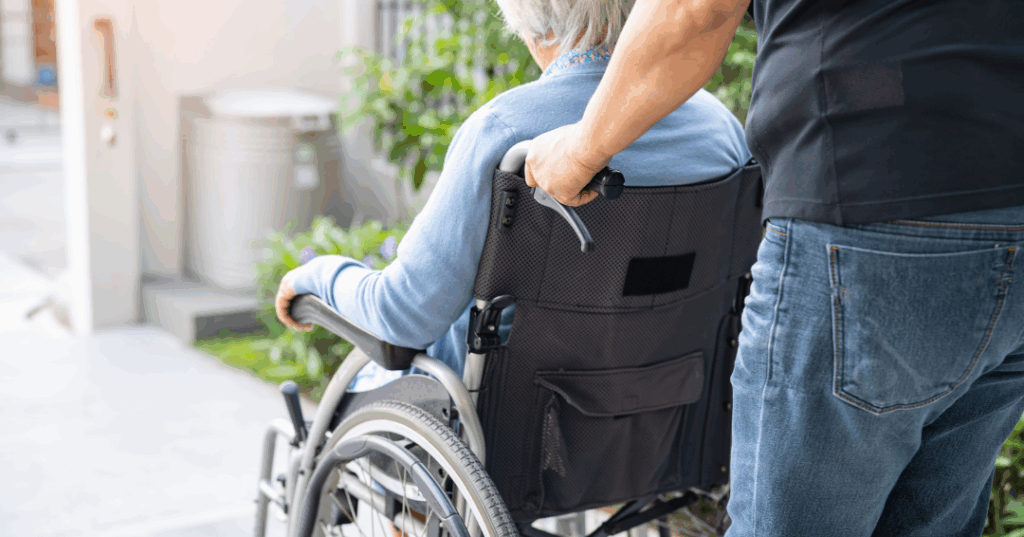Staying physically strong as a caregiver is of utmost importance as it directly impacts one’s ability to provide optimal care and support to your loved ones. Caregiving often involves physically demanding tasks, such as lifting, transferring, and assisting with daily activities. Maintaining physical strength and endurance enables caregivers to perform these tasks with ease, reducing the risk of injury to themselves and the person under their care. Physical strength also contributes to better mental well-being, as it promotes confidence, resilience, and a sense of accomplishment, which are crucial in navigating the challenges and emotional strain that can come with the role. Ultimately, by prioritizing their physical well-being, caregivers can ensure they are better equipped to provide the highest level of care, maintain their own health and well-being, and sustain their commitment to their loved ones. Here are some tips that can help:
1. Caregiver training
If you’re new to taking care of your loved ones, attend caregiver training sessions to understand the proper ergonomics of caring for your loved ones. These caregiver training sessions are designed to equip you with the necessary techniques to perform caregiving tasks safely. One of the key aspects is proper body mechanics and lifting techniques that minimize strain on your back and reduce the risk of injury. Learning how to maintain a stable base of support, use your leg muscles instead of your back when lifting, and distribute weight evenly can significantly decrease the pressure on your spine and minimize the likelihood of sustaining musculoskeletal injuries. Additionally, caregiver training sessions can provide insights into assistive devices and tools that can aid in caregiving, such as transfer belts, lifting aids, or adjustable beds, which further enhance safety and reduce physical strain.
2. Address the aches and discomforts that you have first – See a physiotherapist
Caregiving often involves repetitive motions, prolonged periods of standing or sitting, and physical exertion, which can put significant strain on your muscles and joints. Neglecting these aches and pains can lead to further discomfort, decreased mobility, and even chronic conditions. A physiotherapist specializes in assessing and treating musculoskeletal issues, offering targeted interventions to alleviate pain, restore function, and prevent further injury. They can identify the root causes of your aches, whether it’s poor posture, improper body mechanics, or overuse, and can provide personalized treatment plans to address your specific needs. Physiotherapy may include manual therapies, therapeutic exercises, stretching routines, postural correction techniques, and ergonomic recommendations tailored to your caregiving tasks. Under the guidance of a physiotherapist, you gain knowledge about self-care strategies, including exercises and preventive measures, to manage and prevent future musculoskeletal issues. Taking care of your own physical well-being is essential as a caregiver to ensure you can continue providing the best care for your loved ones without compromising your own health.
3. Unlock your joy in motion – find an activity that you like!
The key is to identify an activity that brings you joy, relaxation, and a sense of rejuvenation. Some caregivers find solace in activities like meditation or yoga, others enjoy engaging in workouts such as running, swimming, or pilates, as they release endorphins and provide a natural boost to mood. Finding an enjoyable activity to destress as a caregiver is crucial to avoid burnout. Prioritizing self-care allows you to recharge, reduce stress, and maintain emotional well-being. By making time for yourself and engaging in activities that bring you joy, you can better manage caregiving challenges and sustain a healthier and more balanced caregiving journey.
4. Making it sustainable – Every effort counts!
Choosing a physical activity that you enjoy will increase the likelihood of you making it a long term habit. Ensure these activities fit into your schedule. If you find this challenging, choose specific days and times that work best for you and commit to sticking to them. Start small and gradually increase the duration and intensity over time. Find an exercise buddy that shares similar fitness goals . This will make exercise more enjoyable and help you stay accountable. You can motivate and support each other throughout the journey, making it more sustainable. Also, be flexible – There may be times where it may be difficult to stick with the routine. Instead of giving up entirely, find alternative ways to be active, such as taking the stairs instead of the elevator or doing a quick home workout. Remember, consistency is key when establishing an exercise routine.

Ms Debra Ow
Senior Physiotherapist
Altum Physio Pilates Pte Ltd
All information is accurate at the time of publishing.

